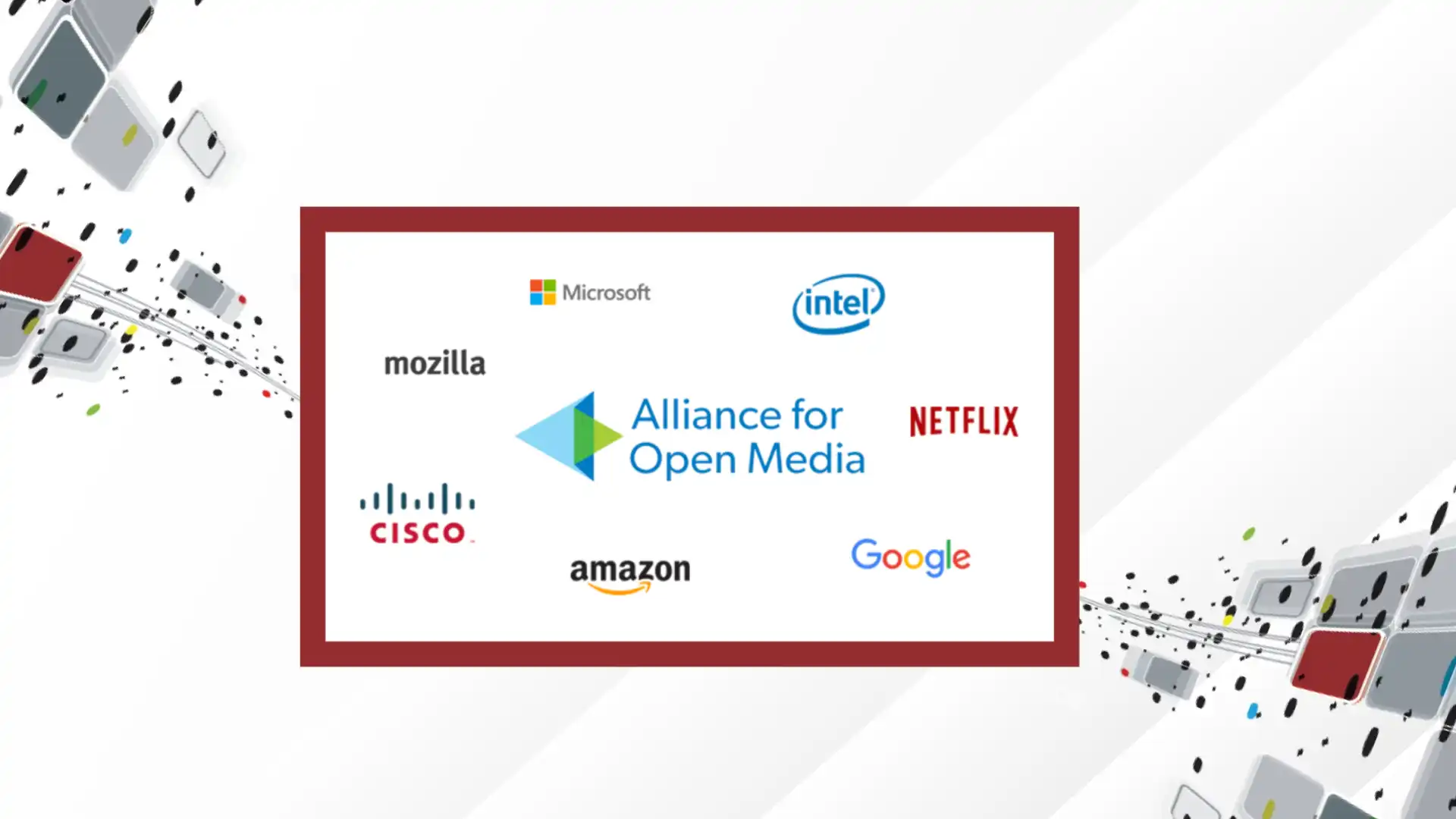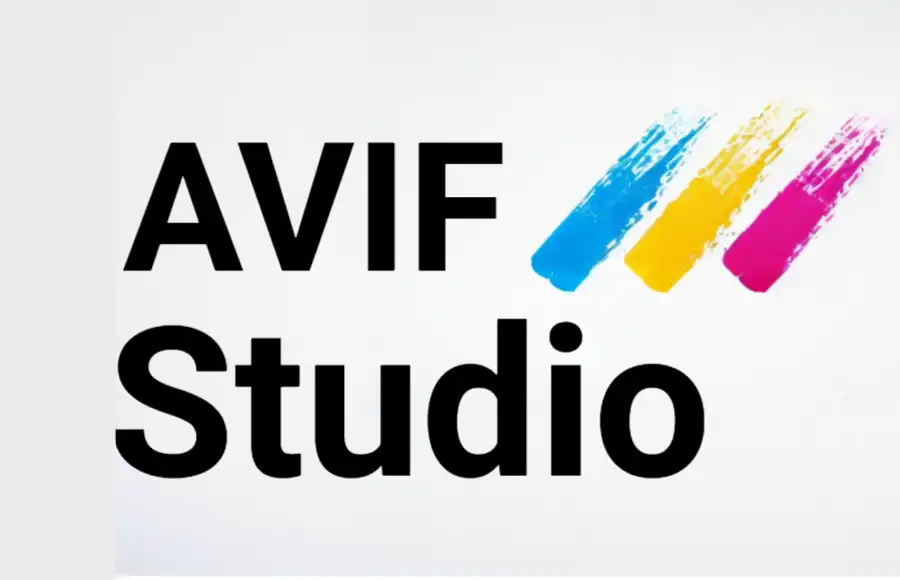AVIF: The Next Generation Image Format Created by Alliance for Open Media

The Alliance for Open Media (AOM) unveiled AVIF (AV1 Image File Format) as the latest innovation in image compression technology. AOM, a consortium of major tech companies including Google, Apple, Microsoft, Amazon, and others, collaborated to create AVIF with the goal of establishing a new industry standard for image compression.
AVIF builds upon the success of the AV1 video codec, which was introduced to address the growing demand for high-quality video streaming while minimizing bandwidth consumption. AVIF leverages the same underlying principles of AV1 to deliver significant improvements in image quality and compression efficiency compared to existing formats like JPEG and PNG.
So, who exactly created AVIF?
The development of AVIF was a collaborative effort involving engineers and experts from various member companies within the Alliance for Open Media. These companies pooled their resources, expertise, and intellectual property to develop an image format that could meet the evolving needs of the digital media landscape.
Google, as one of the founding members of AOM, played a crucial role in the development of AVIF. The search giant contributed its expertise in video and image compression, drawing from its experience with projects like WebP and VP9. Google's commitment to open standards and its vast infrastructure for handling multimedia content made it an integral part of the AVIF development process.
Apple, another key member of AOM, brought its expertise in hardware and software optimization to the table. With a focus on delivering seamless user experiences across its ecosystem of devices, Apple contributed insights into how AVIF could be optimized for performance on platforms like iOS and macOS.
Microsoft, Amazon, and other AOM members also made significant contributions to the development of AVIF, bringing their unique perspectives and capabilities to the project. Together, these companies worked tirelessly to refine the AVIF specification, optimize its performance, and ensure its compatibility with a wide range of devices and software platforms.
The result of this collaborative effort is a next-generation image format that promises to revolutionize how we capture, store, and share visual content online. AVIF offers significant improvements in compression efficiency, enabling smaller file sizes without compromising image quality. This makes it ideal for use cases ranging from web browsing and mobile apps to digital photography and professional imaging workflows.
With its widespread industry support and backing from major tech players, AVIF is poised to become the new standard for image compression on the web. As more companies and developers adopt AVIF and integrate support for the format into their products and services, we can expect to see a significant reduction in bandwidth usage, faster load times, and a richer visual experience for users worldwide.
In conclusion, AVIF is the result of a collaborative effort by the Alliance for Open Media, with contributions from leading tech companies like Google, Apple, Microsoft, and Amazon. By leveraging the latest advancements in video compression technology, AVIF promises to set a new standard for image compression, ushering in a new era of visual content on the web and beyond.
Frequently Asked Questions
- What prompted the creation of AVIF as a new image format?
- Which consortium of companies collaborated to develop AVIF?
- Can you name some of the major tech companies involved in the creation of AVIF?
- What specific expertise did Google contribute to the development of AVIF?
- How did Apple's involvement influence the development and optimization of AVIF?
- What role did Microsoft play in the creation of AVIF?
- How does AVIF differ from existing image formats like JPEG and PNG?
- What are some of the potential benefits of adopting AVIF over other image formats?
- How was AVIF optimized to ensure compatibility across different devices and software platforms?
What prompted the creation of AVIF as a new image format?
The creation of AVIF was prompted by the need for a more efficient and versatile image compression format to address the increasing demands of digital media consumption. Existing image formats like JPEG and PNG have limitations in terms of compression efficiency and image quality, especially when dealing with high-resolution images and photographs. As internet bandwidth continues to be a valuable resource, there was a growing necessity for an image format that could deliver superior compression without sacrificing image fidelity.
Additionally, with the proliferation of devices with varying screen sizes and resolutions, there was a need for a format that could adapt to different display environments while maintaining consistent visual quality. These factors, along with the desire to push the boundaries of image compression technology, prompted the collaboration of major tech companies to develop AVIF as a next-generation image format.
Which consortium of companies collaborated to develop AVIF?
AVIF was developed by the Alliance for Open Media (AOM), a consortium of leading tech companies, organizations, and individuals dedicated to creating open and royalty-free media technologies. The AOM was founded in 2015 with the goal of developing next-generation codecs and formats to meet the evolving needs of digital media.
The AOM's members include major tech giants such as Google, Apple, Microsoft, Amazon, Netflix, Facebook, Mozilla, and many others. These companies joined forces to pool their resources, expertise, and intellectual property to develop AVIF as a modern and efficient image format.
Can you name some of the major tech companies involved in the creation of AVIF?
Some of the major tech companies involved in the creation of AVIF include Google, Apple, Microsoft, Amazon, Netflix, Facebook, and Mozilla. These companies are all members of the Alliance for Open Media (AOM) consortium, which spearheaded the development of AVIF.
Each of these companies brought unique expertise and resources to the table, contributing to different aspects of AVIF's development, optimization, and adoption.
What specific expertise did Google contribute to the development of AVIF?
Google, as one of the founding members of the Alliance for Open Media (AOM), played a crucial role in the development of AVIF. The company leveraged its extensive experience in video and image compression technologies, honed through projects like WebP and the VPx series of video codecs. Google's expertise in this domain allowed it to contribute valuable insights into optimizing compression algorithms and improving visual quality while minimizing file sizes.
Furthermore, Google's commitment to open standards and its vast infrastructure for handling multimedia content made it an integral part of the AVIF development process. The company's contributions helped ensure that AVIF would be widely supported across different platforms and devices, laying the groundwork for its adoption as a new industry standard for image compression.
How did Apple's involvement influence the development and optimization of AVIF?
Apple's involvement in the development of AVIF brought its expertise in hardware and software optimization to the project. With a focus on delivering seamless user experiences across its ecosystem of devices, Apple contributed insights into how AVIF could be optimized for performance on platforms like iOS and macOS.
Additionally, Apple's commitment to privacy and security influenced the development of AVIF in terms of ensuring that the format could be used safely and securely across its products and services. By collaborating with other members of the Alliance for Open Media (AOM), Apple helped shape AVIF into a format that could meet the stringent requirements of modern digital media workflows.
What role did Microsoft play in the creation of AVIF?
Microsoft, as a key member of the Alliance for Open Media (AOM), played a significant role in the creation of AVIF. The company contributed its expertise in software development, digital media technologies, and platform optimization to the project.
Microsoft's involvement helped ensure that AVIF would be compatible with its ecosystem of products and services, including Windows, Office, and the Edge web browser. By collaborating with other AOM members, Microsoft contributed to the development of AVIF as a versatile and widely supported image format.
How does AVIF differ from existing image formats like JPEG and PNG?
AVIF differs from existing image formats like JPEG and PNG in several key ways. Firstly, AVIF employs advanced compression algorithms based on the AV1 video codec, which offer significant improvements in compression efficiency compared to traditional formats. This allows AVIF to achieve smaller file sizes while maintaining high image quality, especially for complex images with detailed textures and gradients.
Additionally, AVIF supports features such as alpha transparency, HDR (High Dynamic Range), and wide color gamuts, making it suitable for a wide range of applications including digital photography, web graphics, and professional imaging workflows. Moreover, AVIF is designed to be a modern, future-proof format that can adapt to evolving display technologies and emerging use cases, ensuring its longevity and relevance in the rapidly evolving digital media landscape.
What are some of the potential benefits of adopting AVIF over other image formats?
There are several potential benefits of adopting AVIF over other image formats like JPEG and PNG. Firstly, AVIF offers superior compression efficiency, allowing for smaller file sizes without compromising image quality. This results in faster loading times and reduced bandwidth usage, making it ideal for web browsing, mobile apps, and other online applications.
Additionally, AVIF supports advanced features such as alpha transparency, HDR, and wide color gamuts, enabling richer and more immersive visual experiences. Furthermore, AVIF's modern architecture and open, royalty-free licensing model make it an attractive option for developers and content creators looking to future-proof their workflows and ensure compatibility across different platforms and devices.
How was AVIF optimized to ensure compatibility across different devices and software platforms?
AVIF was optimized to ensure compatibility across different devices and software platforms through rigorous testing and collaboration among members of the Alliance for Open Media (AOM). The AOM's members worked together to develop reference implementations of AVIF encoders and decoders, which were then tested across a wide range of devices, operating systems, and software environments.
Furthermore, the AOM established clear specifications and guidelines for AVIF implementation, ensuring that it would be interoperable and consistent across different implementations. By adhering to these standards, developers and manufacturers could confidently integrate support for AVIF into their products and services, knowing that they would be compatible with the broader AVIF ecosystem.
